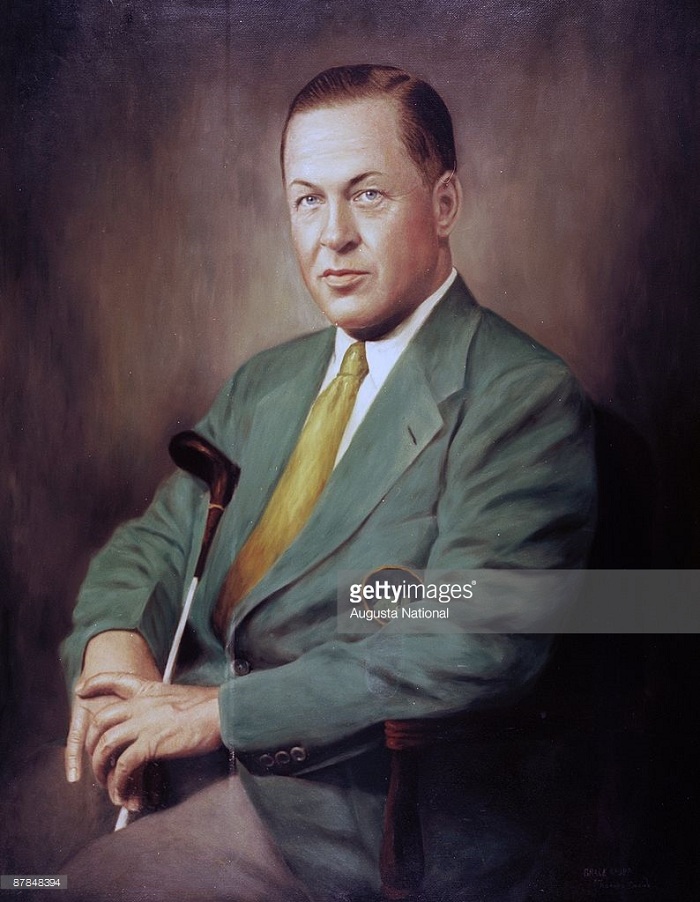The Masters

Every major has tradition behind it, but as all but one are held on different courses, the Masters is very special. It has history, tradition and something more…it has Augusta National.

Founded in 1933 by Bobby Jones and Clifford Roberts, and designed by Alistair MacKenzie, the club was never expected to be anything more than a really nice club for Jones and some friends. Jones just wanted a place he could enjoy playing in his retirement.

Even the Masters, which was started by Clifford Roberts and Bobby Jones wasn’t called by that name as Jones thought calling it “The Masters” was too pretentious, so it was launched as the “Augusta National Invitational” and it caught on with the pros and the imagination of the golfing public.
The rest is history.
But what is it about Augusta National that makes the club so damned special? Isn’t a golf course just a golf course?
Yes, to a certain point, but some courses simply have something extra that propels it head and shoulders above everyone else. Pebble Beach is an excellent course, but would it be as special if it wasn’t a long-time host of both PGA Tour and celebrity events?
So, while the design has to be outstanding, there needs to be something more… a myth, a legend, something that grabs people’s imagination and will not let go.
Enter Augusta National, arguably one of the most exclusive, yet highly rated courses in the US and possibly the world.
How exclusive is it?
Suffice it to say that if the President of the United States wanted to play there, and if he wasn’t a member or guest of a member, he wouldn’t get through the gates even with secret service.
Augusta National is a “golf” club. There are no swimming pool or tennis courts. The clubhouse, while historical and quite functional, would hardly be considered impressive by today’s standards in Asia – unless you took time to look at the portraits on the walls.
However, it is known that Augusta National Golf Club has about 300 members at any given time.
Membership is strictly by invitation; there is no application process. In 2004, USA Today published a list of all the current members.[Membership is believed to cost between $10,000 and $30,000 and annual dues were estimated in 2009 to be less than $10,000 per year.
Imagine trying to get those kind of Annual Dues here in Vietnam. The screams would be earth-shattering from the average player, but I suspect the people who truly value membership at an ultra-exclusive club would have no problem with it. In fact, many of those types of people spend $10,000 on shopping holiday.
More on that subject next month…
Due to the mystery and its colorful history, Augusta National remains one of the premiere course on the planet, but mystery and history isn’t enough either.
When the world sees Augusta National on TV during the Master’s telecasts, they see a golf course which looks (and is) as perfect as humanly possible. With a guesstimated maintenance budget of $5 million dollars per year, very few clubs can ever hope to attain the same level of perfection.
They have their own turf grass laboratory to run soil tests; have the best maintenance crew and superintendents on the planet; and the latest equipment. Granted, companies like Toro, Jacobsen, and John Deere give them a lot for free – just to be seen during the Master’s tournament. Some of the biggest advances in turf maintenance comes from the guys at Augusta National. For example, the “SubAir System” which allows the superintendent to drain water from the greens faster, pump cool air into the Bent Grass root system to keep them from frying in the Georgia summer heat and can even blow warm air in during the winter if necessary. It’s pretty cool…no pun intended.
This is one of the reasons why Augusta National can have some of the fastest greens on the planet. Having played there as a guest of a member back in the 80’s, I would guess the speed was around 12-13, which alone is frightening. It is said that during the Master’s, the greens can hit 16.
Bent grass and meticulous grooming are two reasons why they’re fast, but the other reason which wasn’t seen on TV is the amount of slope, which is substantial. HDTV is now allowing viewers to get an idea of what they truly look like.
It also has the advantage of being closed for six months of the year.
You would think that nothing happens during the summer, but you’d be wrong as that’s when the maintenance crews really go to work. It seems that the course is slightly different for every Master’s event and the players actually enjoy trying to figure out what is different from year to year during the practice rounds.
They don’t often go for major renovations, like when they “Tiger-proofed” the course in 2000, often its subtle differences like the re-contouring of a green, or maybe a bunker. They do just enough to keep the players asking questions.
Playing distances have changed during the Master’s as well. For example, in 1940 the course played 6,900 yards (6,218 m), and in 2010 it was 7,435 yards (6,799 m).
While many have tried to become another Augusta National, it simply cannot be done. However, that doesn’t mean a club cannot strive to be the best in their market or region.
It’s good to have a goal to strive towards and, in the golf business, Augusta National is the gold standard.
















